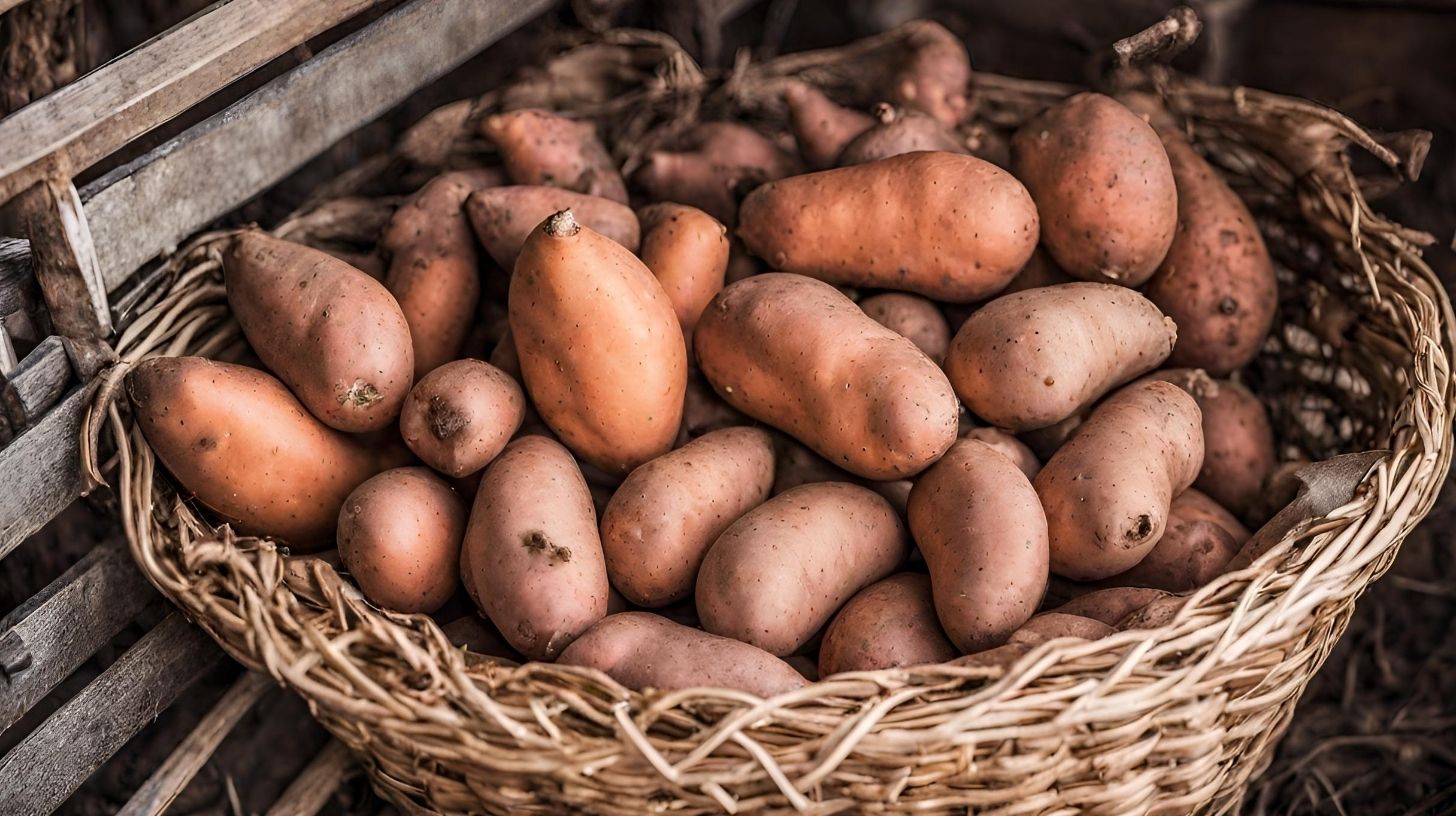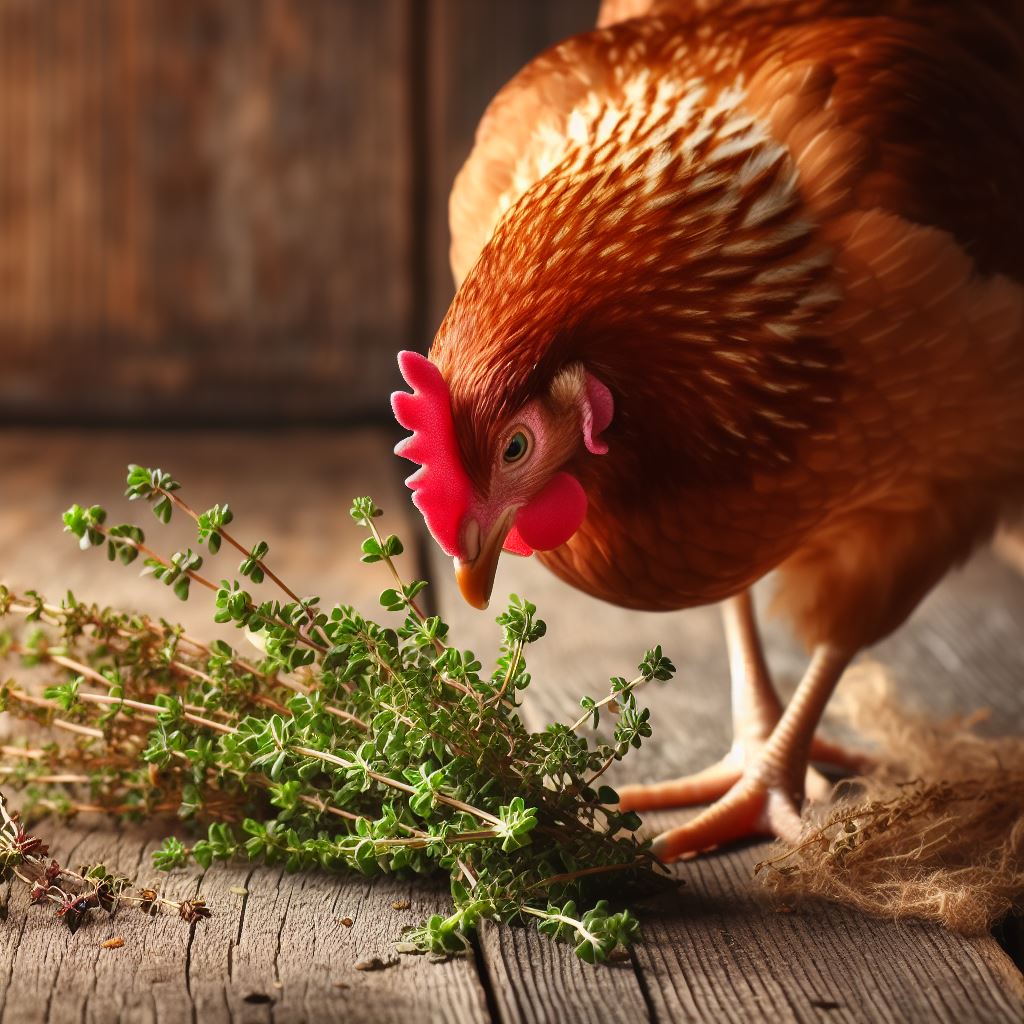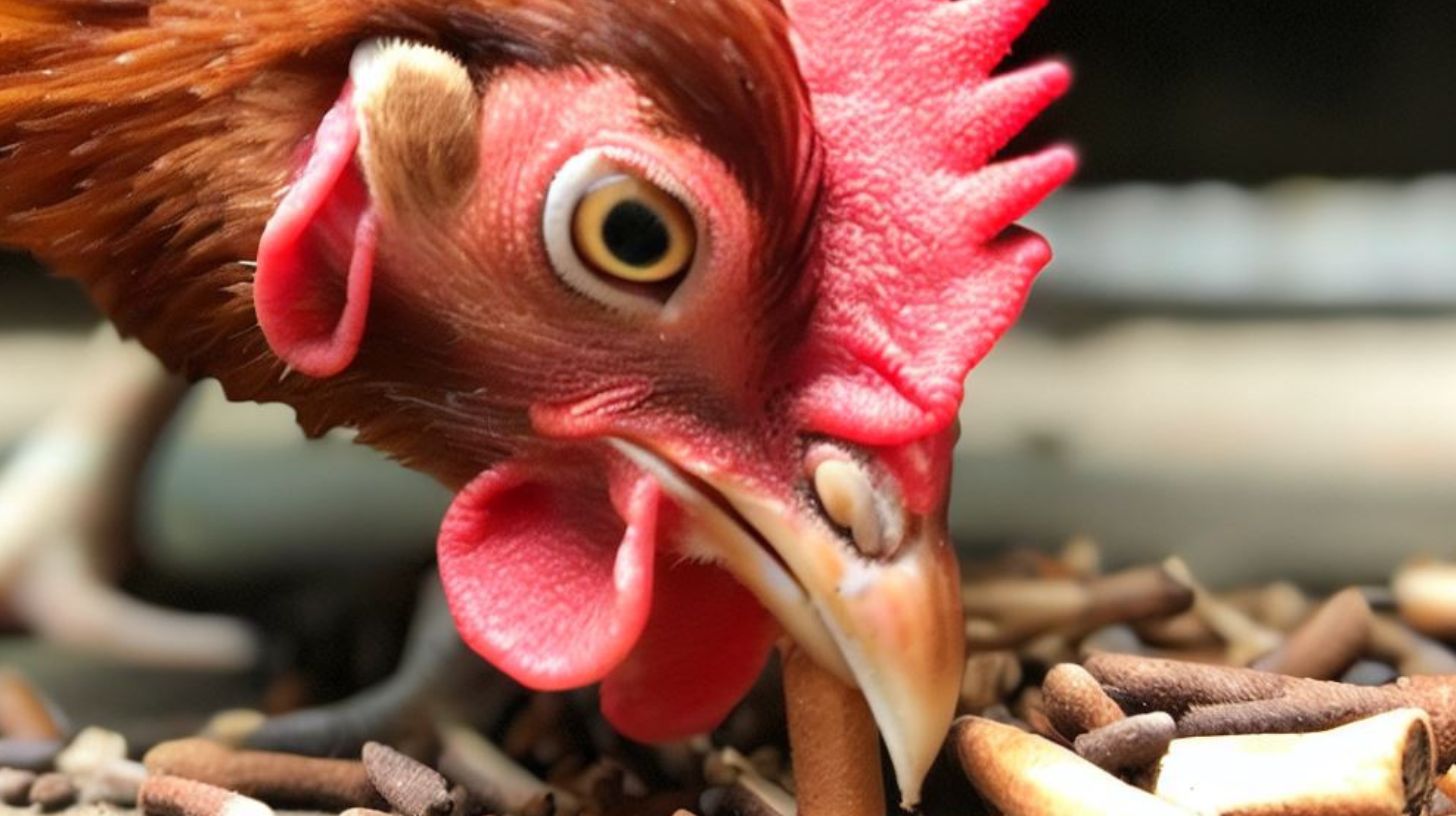Can Chickens Safely Eat Sweet Potato Skins? Feeding Tips

Table of content:
- Nutrition in Sweet Potato Skins
- Benefits of Sweet Potato Skins for Chickens
- Are Sweet Potato Skins Safe for Chickens to Eat?
- Are Sweet Potato Skins Better for Chickens Than the Flesh?
- Best Practices for Feeding Sweet Potato Skins to Chickens
- Frequently Asked Questions About Feeding Sweet Potato Skins to Chickens
- Conclusion
Sweet potatoes make a nutritious treat for backyard chickens. Both the flesh and the skin of sweet potatoes contain beneficial nutrients that can contribute to a balanced diet. However, there are some factors to consider before feeding sweet potato skins to chickens.
Key Takeaways:
- Sweet potato skins contain fiber, vitamins, minerals and antioxidants that can benefit chickens. The flesh provides more concentrated nutrition than the skin.
- Skins should be fed in moderation, as the high fiber content can cause digestive upset if chickens eat too much.
- Make sure skins are thoroughly washed, as pesticides or dirt on the surface can be harmful. Peeling may be better for very young or sensitive chickens.
- Some specific compounds in sweet potato skins like oxalates and solanine may be problematic in very large amounts. Variety and moderation is key.
- The skin adds beneficial fiber and makes sweet potatoes an excellent foraging food. The skin can also provide needed roughage and environmental enrichment.
Sweet potatoes provide an excellent source of nutrition and variety for backyard chicken flocks. Both the flesh and the skin offer real benefits. Read on to learn more about feeding sweet potato skins to chickens.
 Nutrition in Sweet Potato Skins
Nutrition in Sweet Potato Skins
The skins of sweet potatoes are rich in many vitamins, minerals and phytonutrients that are great for chicken health. Here are some of the top nutrients found in sweet potato skins:
- Fiber – Sweet potato skins are rich in both insoluble and soluble fiber. Insoluble fiber provides roughage that aids digestion. Soluble fiber helps feed beneficial gut bacteria.
- Vitamin A – Sweet potato skins contain high levels of beta-carotene, which chickens can convert to vitamin A. Vitamin A supports immune function and eye health.
- Anthocyanins – Compounds that give the skin its purple color, anthocyanins are powerful antioxidants that may boost immunity and reduce inflammation.
- Vitamin C – This important water soluble vitamin provides immune support and acts as an antioxidant. Vitamin C also aids collagen formation.
- Potassium – A mineral that supports nerve transmission and muscle function. It is an essential electrolyte.
- Manganese – This trace mineral is necessary for bone health and enzyme function. It helps form connective tissue.
In addition to vitamins and minerals, sweet potato skins provide other active plant compounds like carotenoids and phenolic acids that act as antioxidants and may help fight disease.
Benefits of Sweet Potato Skins for Chickens
Beyond basic nutrition, sweet potato skins provide some specific benefits for chickens:
- Aids Digestion – The insoluble fiber in the skin can provide roughage and motility to aid digestion. This can help prevent digestive issues.
- Supports Gut Health – Soluble fiber feeds healthy bacteria in the digestive tract which helps balance the gut microbiome.
- Boosts Immunity – Nutrients like vitamin A, vitamin C and manganese support the immune system and resistance to disease.
- Supports Eye Health – Compounds like beta-carotene and zeaxanthin promote healthy eyesight. This can improve abilities like foraging.
- Acts as an Antioxidant – Antioxidants like vitamin C and anthocyanins counteract cell damage from free radicals and inflammation. This helps reduce disease risk long-term.
- Provides Variety – Different foods add variety to the diet and provide a more complete nutritional profile.
- Aids Foraging – The skin gives chickens something to peck at and forage actively for. This provides enrichment.
The nutrients and fiber in sweet potato skins offer clear benefits for chickens. Feeding the skins can be an excellent way to add more nutrition to your flock’s diet.
 Are Sweet Potato Skins Safe for Chickens to Eat?
Are Sweet Potato Skins Safe for Chickens to Eat?
Sweet potatoes and their skins are generally considered safe and healthy for chickens. There are just a few things to be aware of when feeding the skins:
- Solanine – Like tomatoes, potatoes contain small amounts of solanine. High levels can be toxic, but sweet potato skins are very low risk. Still, moderation is key.
- Oxalates – Oxalic acid may bind to calcium preventing absorption. Sweet potatoes contain oxalates, but levels are low and the boiling process reduces oxalate content further.
- Dirt/Chemicals – Skins should be washed well to remove potentially harmful dirt, debris or chemical residues from sprays. Peeling may be better for young chicks.
- Digestive Upset – Too many skins at once can potentially cause crop impaction or other issues. Variety and moderation is important.
- Boredom – Feeding high volumes of snacks like skins can lead to boredom and obsessive egg eating or other bad behaviors. Use skins as part of a balanced diet.
As long as you take basic precautions, sweet potato skins are a safe, healthy treat for backyard chickens. Making sure they are washed and fed in moderation is important.
Are Sweet Potato Skins Better for Chickens Than the Flesh?
The skin and flesh both provide benefits, but the flesh is richer in some key nutrients. Here is a quick comparison:
- Fiber – Skins have more insoluble and soluble fiber than the flesh. This aids digestion.
- Vitamin A – The orange flesh is higher in bioavailable beta-carotene than the darker skin. Vitamin A supports immunity and eyesight.
- Anthocyanins – The pigments that give the skins their purple color provide these antioxidant compounds. Flesh has less.
- Vitamin C – This antioxidant vitamin is found in similar levels in both the flesh and skin.
- Potassium – A key electrolyte, potassium is more concentrated in the sweet potato flesh.
- Carotenoids – Both parts contain these antioxidant compounds, but the orange flesh provides more overall.
In general, the sweet potato flesh provides more concentrated nutrition by weight than the skins. However, the skins offer the benefit of insoluble fiber for gut health. Feeding some of both parts helps provide the full spectrum of nutrients.
Best Practices for Feeding Sweet Potato Skins to Chickens
If you want to feed sweet potato skins to your flock, here are some tips:
- Wash the skins thoroughly first to remove dirt, debris and chemical residues. Peeling may be better for young chicks.
- Chop skins into smaller pieces so chickens don’t choke. Some people process skins and flesh together into a mash.
- Feed skins in moderation – no more than a few per chicken per day. Too much can impact digestion.
- Mix skins in with other treats and the regular diet. Variety is important to get a range of nutrients.
- For more motivation, hang skins up in the run for chickens to jump and peck at. This provides exercise and enrichment.
- Remove any skins that start to rot after a few days. Don’t leave large amounts sitting out in the run for long periods.
- Store any excess skins in the refrigerator if you don’t use them all right away. Skins will last 5-7 days.
Following these tips will help you safely feed sweet potato skins to your flock and get the most benefits.
Frequently Asked Questions About Feeding Sweet Potato Skins to Chickens
Can chickens eat raw sweet potato skins?
Yes, chickens can eat raw sweet potato skins. Cooking the skins first may offer more benefits though. Boiling helps reduce anti-nutrients like oxalates while retaining vitamins. Cooking also softens the skins, making them easier to chew and digest. But raw skins still offer nutrition and fiber benefits.
Do sweet potato skins help chicken egg production?
The nutrients in sweet potato skins can indirectly boost egg production by supporting overall health. Beta-carotene, vitamin A and manganese promote egg production. The antioxidant activity helps reduce stress. Insoluble fiber aids digestion for better nutrient absorption. But skins likely won’t directly increase egg numbers. A balanced diet is key.
Can too many sweet potato skins upset a chicken’s stomach?
Yes, feeding too many sweet potato skins could potentially cause digestive upset in chickens. The high fiber and roughage content of the skins, coupled with compounds like oxalates, may irritate the crop, proventriculus and gizzard if very large amounts are eaten. Moderation is key.
Do chickens need vegetable skins for fiber?
Chickens don’t necessarily need vegetable skins for fiber, but the skins do provide insoluble fiber that can benefit gut health. Alternate sources like oats, seeds, dark leafy greens, and whole grains also provide lots of fiber. A varied diet will supply plenty of fiber. But skins make a nice supplement.
What part of sweet potatoes do chickens like best?
Chickens don’t show a strong preference between the flesh or the skin. They will eat all parts of the sweet potato happily! If anything, skins may offer more motivation for pecking and foraging behavior, which chickens naturally enjoy. Both parts provide good nutrition.
Conclusion
Sweet potato skins make a safe, healthy supplement to a balanced diet for backyard chickens. The skins provide insoluble fiber that aids digestion and gut health. They also contain an array of vitamins, minerals and beneficial plant compounds that contribute to overall wellness. Feeding sweet potato skins promotes foraging behavior and provides environmental enrichment.
Focus on moderation when feeding skin to avoid potential digestive issues. Take care to wash skin thoroughly first. Follow these precautions, and the skins can be an excellent addition to your flock’s diet. Alternating with the sweet potato flesh will help ensure your chickens get the full profile of nutrients this vegetable provides. Both the flesh and the skin offer real benefits.
Welcome. I’m Adreena Shanum, the proud owner of this website, and I am incredibly passionate about animals, especially poultry. I founded adreenapets.com as a labor of love, stemming from my desire to share my knowledge and experiences with poultry enthusiasts worldwide.




